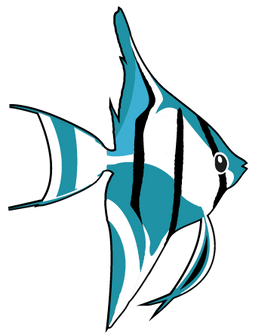Description
Neocaridina shrimp, commonly known as freshwater dwarf shrimp, are small, vibrant, and hardy invertebrates popular in the aquarium hobby. These shrimp come in a wide variety of colors, such as red, blue, yellow, and green, with the Red Cherry Shrimp (Neocaridina davidi) being among the most well-known varieties. Growing up to 1-1.5 inches in length, they are peaceful and thrive in planted aquariums, where they contribute to the ecosystem by eating algae and detritus.
They are relatively easy to care for, making them great for beginners. Neocaridina shrimp prefer stable water conditions with temperatures ranging between 65-80°F (18-27°C) and a neutral pH. They are highly adaptable but are best kept in well-cycled tanks to avoid sudden water parameter shifts. These shrimp breed easily in captivity, with females carrying eggs under their abdomen until they hatch into miniature versions of the adults.
Tank Setup:
- Tank Size: A 5-gallon tank is the minimum recommended size for a small colony, though larger tanks (10 gallons or more) provide more stable water conditions.
- Substrate: Fine, dark-colored substrates are ideal, as they provide contrast to the shrimp’s colors and support the growth of biofilm, which shrimp feed on.
- Plants & Décor: Neocaridina shrimp love planted tanks with moss, Java ferns, and other plants, as these provide hiding places and surfaces for biofilm. Driftwood and rocks can also be added.
- Filtration: Use a gentle sponge filter or a filter with low flow to avoid sucking up shrimp. Filters help keep water clean without creating strong currents.
Water Parameters:
- Temperature: 65-80°F (18-27°C); aim for the mid-70s for optimal health.
- pH: A neutral pH between 6.5 and 8.0 is ideal.
- Hardness: They prefer water with moderate hardness (GH 6-8, KH 3-6). Too soft or too hard water can affect their molting process.
- Ammonia/Nitrite: Keep ammonia and nitrite at 0 ppm, as they are highly toxic to shrimp.
- Nitrate: Nitrate levels should be kept low (below 20 ppm) to avoid stressing the shrimp. Regular water changes of 10-20% per week will help maintain water quality.
Diet:
- Neocaridina shrimp are omnivores and scavengers, feeding on algae, biofilm, and decaying plant matter. Supplement their diet with high-quality shrimp pellets, blanched vegetables (like spinach or zucchini), and occasional protein-rich foods like bloodworms.
- Feeding Frequency: Feed small amounts every day or every other day. Remove any uneaten food to avoid water contamination.
Tank Mates:
- Neocaridina shrimp are peaceful and do best with similarly peaceful tank mates, such as small fish like guppies, endlers, or rasboras. Avoid large or aggressive fish that might prey on shrimp.
- Other invertebrates like snails can also make good tank mates. However, Neocaridina shrimp should not be housed with aggressive shrimp species like some Caridina shrimp.
Breeding:
- Neocaridina shrimp are prolific breeders in stable conditions. Females carry eggs under their abdomen (known as "berried") for about 3-4 weeks until they hatch into miniature, fully-formed shrimp.
- To encourage breeding, provide plenty of hiding spots and maintain consistent water parameters. No special intervention is needed, and shrimp will breed naturally if they feel comfortable.
Maintenance:
- Regular water changes and maintaining stable water conditions are key to their long-term health. Keep an eye on water parameters, and avoid sudden changes that can stress the shrimp.
Payment & Security
Your payment information is processed securely. We do not store credit card details nor have access to your credit card information.

![Coachella Valley Aquatics Shrimp Assorted Shrimp (Neocaridina) [Skittle Colors]](http://cvafish.com/cdn/shop/files/coachella-valley-aquatics-shrimp-assorted-shrimp-neocaridina-skittle-colors-39982469939356_{width}x.png?v=1728688031)
![Coachella Valley Aquatics Shrimp Assorted Shrimp (Neocaridina) [Skittle Colors]](http://cvafish.com/cdn/shop/files/coachella-valley-aquatics-shrimp-assorted-shrimp-neocaridina-skittle-colors-39982469939356_130x.png?v=1728688031)